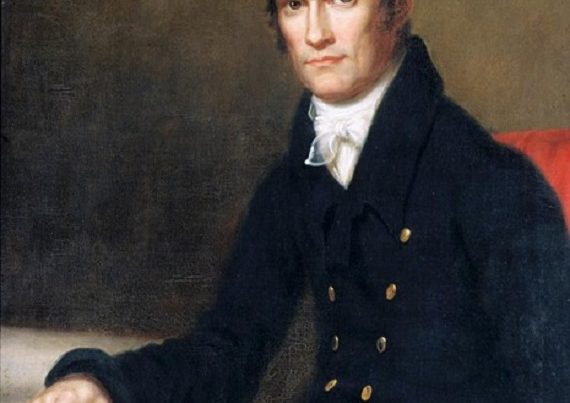It takes men of worth to recognize worth in men. – Thomas Carlyle
Totalitarian movements are mass organizations of atomized, isolated individuals. – Hannah Arendt
Yea, they would pare the mountain to the plain to leave an equal baseness. – Tennyson
The mob attacks on Confederate monuments remind me of the “useful idiots” and “rent-a-thugs” who are happily condoned, if not employed outright by collectivist States to divert the passions of the masses. We suspect the real reason these monuments are under attack is not because of the specious “Jim Crow” charges leveled at them by the “Black Lives Matter” crusaders, but because these men were secessionists, the worst enemies of Empire. Therefore they must be discredited, for they expose The Myth of American History, which proclaims that “The Civil War was all about slavery, the righteous North waged it to free the slaves, and the evil South fought to keep them. End of story. Any questions?”
Well, yes. Something doesn’t compute, here. If the North were waging a war on slavery, why didn’t she wage war on New England cotton mills and their profits from slave-picked cotton? Or on New York and Boston, the largest African slave-trading ports in the world according to the January 1862 New York Journal of Commerce? Or on Northern shipyards that outfitted the slave ships? Or on New England distilleries that made rum from slave-harvested sugar cane to use for barter on the African coast? Or on the African slavers themselves, such as the Kingdom of Dahomey, who captured their fellow Africans and sold them into slavery in the first place? And why did Abraham Lincoln launch the bloodiest war in the history of the Western Hemisphere to drive Southern slavery back into the Union? And why did his Emancipation Proclamation – which was a desperate war measure that did not free a single slave who was not behind Confederate lines, and which was not issued until halfway through the war when the South was winning it – say that slavery was alright as long as one was loyal to his government? And why did he work until the day he died to try and deport to South America those Blacks who were freed by it?
Do not make the common mistake of confusing the many causes of secession – including slavery in the Territories, Radical Abolitionist terrorism, the extortionate tariffs, States’ Rights, etc. – with the single cause of the war, which was secession itself. With the South’s “Cotton Kingdom” out of the Union and set up as a free trade Confederacy on her doorstep, the North’s “Mercantile Kingdom” would collapse. So Lincoln launched an armada against Charleston Harbor to provoke South Carolina into firing the first shot, got the war he wanted (causing Virginia and others to secede when he called for troops to subjugate the “Cotton Kingdom”), and drove the Southern States back into the Union. Then, under Northern bayonets and the pretense of law, a corrupt and vindictive Reconstruction was imposed on the South that transformed the voluntary Union of sovereign States into a coerced industrial Empire.
Results? For the North? “The Gilded Age.” For the South? Grinding poverty in a land laid waste. For the Blacks? A recent study of neglected military and Freedman’s Bureau records has revealed that between 1862 and 1870 a million ex-slaves, or twenty-five percent of the population, died of starvation, disease, and neglect under their Northern “liberators.” Freed from their master’s care, Lincoln had told them to “root hog, or die.” Black enfranchisement, like Black emancipation, was merely an incidental tool, not the point of the North’s conquest, and once she had achieved it, the North abandoned her Black puppets to the upheaval she had wrought in Southern society and turned her attention to the Plains Indians, who were in the way of her trans-continental railroads. But that’s another story. Let the Indians tell you that one. Freedom? Union at the point of the bayonet is slavery to a totalitarian government. Equality? Chronic Black riots in segregated Northern ghettos speak for themselves, but they keep Desperate White Liberals busy with crusades designed to divert Black attention onto Southern scapegoats.
The latest are attacks on Confederate monuments honoring men who defended our homeland against invasion, conquest, and a coerced political allegiance – just as their fathers had done in 1776 when the thirteen slaveholding colonies seceded from the British Empire. But I have some bad news for the crusaders: You may tear down every Confederate monument on the planet and it won’t change a thing….
SOURCES
Arendt, Hannah. The Origins of Totalitarianism. 1951; Cleveland and New York: World/Meridian, 1962.
Bennett, Lerone, Jr. Forced Into Glory: Abraham Lincoln’s White Dream. Chicago: Johnson Publishing Co., 2000.
Brown, Dee. Bury My Heart at Wounded Knee. New York: Henry Holt and Co., 1970.
Bowers, Claude G. The Tragic Era: The Revolution after Lincoln. Cambridge: The Riverside P, 1929.
Carlyle, Thomas. The Works of Thomas Carlyle. 12 vols. Library Ed. New York: John B. Alden, 1885. Vol. 8.
DiLorenzo, Thomas J. The Real Lincoln: A New Look at Abraham Lincoln, His Agenda, and an Unnecessary War. New York: Three Rivers P, 2002, 2003.
Downs, James. Sick from Freedom. Oxford and New York: Oxford UP, 2012. Reviewed by Jennifer Schuessler in “Liberation as a Death Sentence,” New York Times, June 10, 2012.
Du Bois, W. E. B. The Suppression of the African Slave Trade to the United States of America 1638-1870. New York: Longmans, Green, & Co., 1896.
Farrow, Anne, Joel Lang, and Jennifer Frank of The Hartford Courant. Complicity: How the North Promoted, Prolonged, and Profited from Slavery. New York: Ballentine Books, 2006.
Flaherty, Colin. White Girl Bleed A Lot: The Return of Racial Violence to America and How the Media Ignore it. Washington, DC: WND Books, 2013.
—. Don’t Make the Black Kids Angry: The Hoax of Black Victimization and How We Enable It. 2015.
Fleming, Walter Lynwood, ed. Documentary History of Reconstruction: Political, Military, Social, Religious, Educational and Industrial, 1865 to 1906. 2 vols. Cleveland: Arthur H. Clark Co., 1906.
—. The Sequel of Appomattox: A Chronicle of the Reunion of the States. Textbook Edition. The Chronicles of America Series. Ed. Allen Johnson. Gerhard R. Lomer and Charles W. Jefferys, assistant editors. New Haven: Yale UP, 1919.
Holy Bible. Exodus 20:16; Ecclesiastes 7:13.
Hurston, Zora Neal. Dust Tracks on a Road. 1942; New York: Arno P and The New York Times, 1969.
Kettell, Thomas Prentice. Southern Wealth and Northern Profits: As Exhibited in Statistical Facts and Official Figures. New York: George W. & John A. Wood, 1860.
Leigh, Philip. Southern Reconstruction. Yardley, PA: Westholme Publishing, 2017.
Orwell, George. 1984. New York: Penguin/New American Library/Signet Classics, 1950.
Ortega y Gasset, Jose. Revolt of the Masses. Trans. Anon. 1930; New York: W. W. Norton & Co., 1993.
Pace, Charles T. Southern Independence. Why War? The War to Prevent Southern Independence. Columbia, SC: Shotwell Publishing, 2015.
Sale, Kirkpatrick. Emancipation Hell: The Tragedy Wrought by the Emancipation Proclamation 150 Years Ago. 2012; Columbia, SC: Shotwell Publishing, 2015.
Tennyson, Alfred, Lord. The Works of Alfred Lord Tennyson. 1892; New York and London: MacMillan & Co., 1911.
Tilley, John Shipley. Lincoln Takes Command. Chapel Hill: U North Carolina P, 1941.
Traywick, H. V., Jr. Empire of the Owls: Reflections on the North’s War against Southern Secession. Manakin-Sabot, VA: Dementi Milestone Publishing, 2013.
—. Virginia Iliad: The Death and Destruction of “The Mother of States and of Statesmen.” Manakin-Sabot, VA: Dementi Milestone Publishing, 2016.







